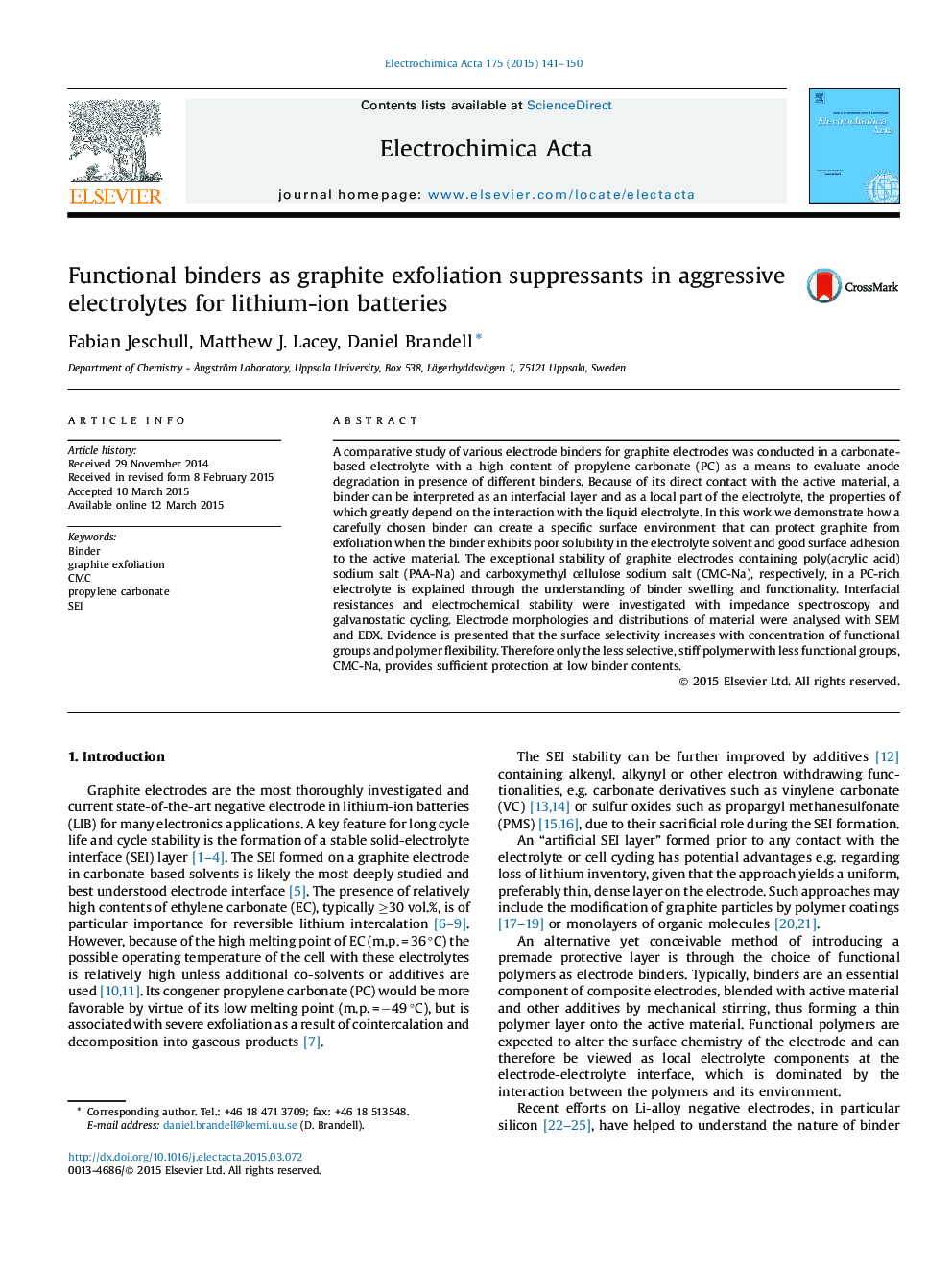| Article ID | Journal | Published Year | Pages | File Type |
|---|---|---|---|---|
| 183634 | Electrochimica Acta | 2015 | 10 Pages |
•Graphite electrodes are cycled in propylene carbonate rich electrolytes.•Binder swelling adversely affects electrode degradation.•Presence of carboxyl groups and sodium ions improve SEI properties.•Protection correlates with surface coverage and functionality of binder.•CMC-Na is less surface selective and provides protection at low binder content.
A comparative study of various electrode binders for graphite electrodes was conducted in a carbonate-based electrolyte with a high content of propylene carbonate (PC) as a means to evaluate anode degradation in presence of different binders. Because of its direct contact with the active material, a binder can be interpreted as an interfacial layer and as a local part of the electrolyte, the properties of which greatly depend on the interaction with the liquid electrolyte. In this work we demonstrate how a carefully chosen binder can create a specific surface environment that can protect graphite from exfoliation when the binder exhibits poor solubility in the electrolyte solvent and good surface adhesion to the active material. The exceptional stability of graphite electrodes containing poly(acrylic acid) sodium salt (PAA-Na) and carboxymethyl cellulose sodium salt (CMC-Na), respectively, in a PC-rich electrolyte is explained through the understanding of binder swelling and functionality. Interfacial resistances and electrochemical stability were investigated with impedance spectroscopy and galvanostatic cycling. Electrode morphologies and distributions of material were analysed with SEM and EDX. Evidence is presented that the surface selectivity increases with concentration of functional groups and polymer flexibility. Therefore only the less selective, stiff polymer with less functional groups, CMC-Na, provides sufficient protection at low binder contents.
Graphical abstractFigure optionsDownload full-size imageDownload as PowerPoint slide
